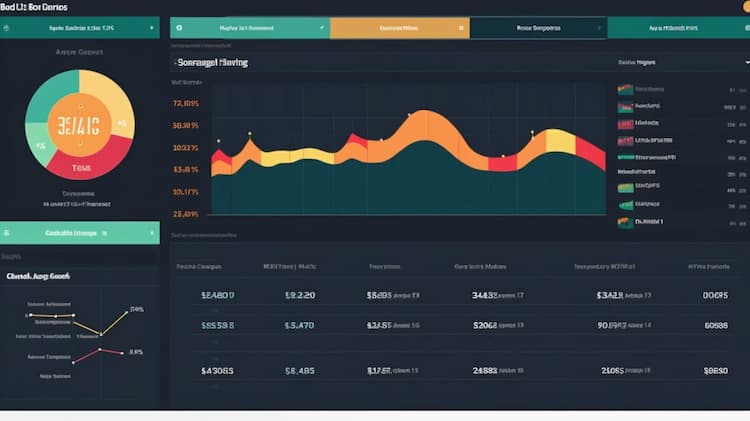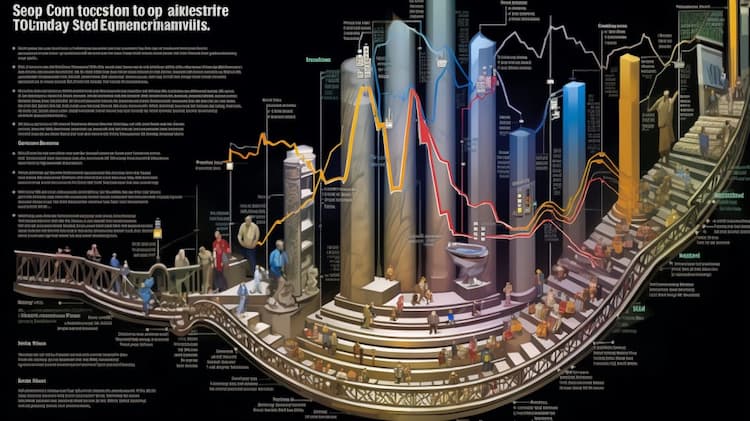
XLF VS IXG
Exchange-Traded Funds (ETFs) have transformed the landscape of modern investing, offering investors a convenient and diversified way to access a wide range of market sectors and asset classes. In this article, we will conduct an in-depth comparison between two prominent ETFs: XLF (Financial Select Sector SPDR Fund) and IXG (iShares Global Financials ETF). Through a detailed analysis of ETF tickers, full names, issuers, sectors, top holdings, capitalization, strategy, tracking, and exposure, we'll gain insights into the nuances of these financial instruments and their potential impact on investment portfolios.
XLF Vs IXG: Overview
XLF and IXG are both ETFs that provide exposure to the financial sector, but they adopt different approaches. XLF seeks to track the performance of companies within the U.S. financial sector, while IXG takes a global perspective by encompassing financial companies from around the world. This distinction in geographical scope can significantly influence their returns and risk profiles.
XLF Vs IXG: Sectors and Top Holdings
The XLF ETF primarily invests in sectors like banking, insurance, and diversified financial services. Its top holdings include major players like JPMorgan Chase, Berkshire Hathaway, and Bank of America. On the other hand, IXG's holdings span a broader range of international financial firms, such as HSBC Holdings, Industrial and Commercial Bank of China (ICBC), and Wells Fargo. Understanding these sectors and top holdings is crucial for investors aiming to align their portfolios with specific sub-industries or global markets.
 XLF overlap XLF VS IXG
XLF overlap XLF VS IXG
XLF Vs IXG: Capitalization and Strategy
XLF and IXG differ in terms of capitalization and strategy. XLF boasts a significant asset under management (AUM) due to its focus on the well-established U.S. financial market. Its strategy revolves around tracking the performance of the Financial Select Sector Index. On the other hand, IXG seeks to replicate the performance of the S&P Global 1200 Financials Sector Index, providing exposure to financial companies worldwide. The choice between a domestic and global perspective has implications for potential returns and diversification.
XLF Vs IXG: Tracking and Exposure
The tracking methods and exposure of XLF and IXG diverge based on their respective indexes. XLF's performance mirrors the U.S. financial sector's movements, while IXG's performance reflects the global financial industry's dynamics. This variance in tracking and exposure highlights the importance of considering broader economic trends and geopolitical factors when evaluating these ETFs.
Conclusion
XLF and IXG offer investors distinct avenues for participating in the financial sector's growth, each with its unique advantages and considerations. As investors aim to make informed decisions about their portfolios, tools like ETF Insider can provide invaluable insights. With its user-friendly app, ETF Insider enables investors to assess holdings, correlations, overlaps, and other critical data, aiding in the selection of the most suitable financial instruments.
Disclaimer: This article is intended for informational purposes only and does not provide investment advisory services. It is crucial to conduct thorough research and consult with financial professionals before making any investment decisions.
Sources:
https://www.ssga.com/ XLF ETF issuer
https://www.ssga.com/us/en/intermediary/etfs/funds/the-financial-select-sector-spdr-fund-xlf XLF ETF official page
XLF quote and analysis
Discover the top holdings, correlations, and overlaps of ETFs using our visualization tool.
Our app allows you to build and track your portfolio.
To learn more about the XLF Financial Select Sector SPDR Fund, access our dedicated page now.
FAQ
Why is XLF better than IXG?
XLF may be considered better than IXG for some investors due to its specific focus, offering diversification.
Does IXG beat XLF?
IXG's performance relative to XLF will vary over time, depending on market conditions.
Should I invest in XLF or IXG?
The choice between XLF and IXG should align with your investment goals, risk tolerance, and desired exposure.
Are XLF and IXG good investments?
Both XLF and IXG can be suitable investments depending on individual investment strategies, goals, and risk profiles.
What is the correlation between XLF and IXG?
The correlation between XLF and IXG can vary over time, reflecting differences in performance.















